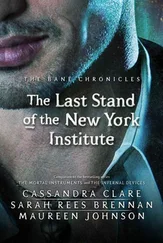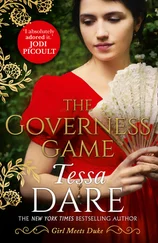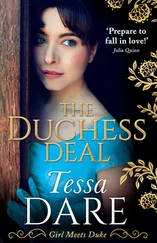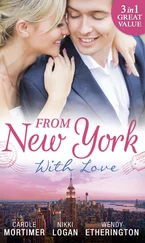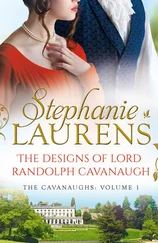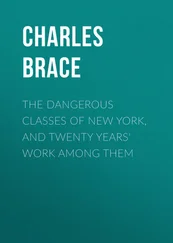I also interviewed James T. Farrell, the author of Studs Lonigan , for the Esquire article while he paced his studio bedroom at the Beaux Arts Hotel in his pajamas. He suddenly stopped and crawled under the bed to search for some old papers and letters. With his bare feet sticking out the side of the bed, I heard him say, “Don’t you see, Dos has lived a world so different from these contemporary writers. His interest isn’t just himself, it’s the world.” I admired Farrell’s respect and loyalty but cringed when he showed me a map of the world with marks on various countries indicating support for his own candidacy for the Nobel Prize. (He was running for laureate!) Then he pointed out other countries and said, “Dos has a lot more backing there than I do.”
My God, I thought, will it come to this? Will my friends and I, twenty or thirty years later, be scrambling under hotel beds for evidence of our standing in the world literary market? Show me the way to Walden Pond!
Dos himself—in the carriage house on the slope of a hill in Baltimore where he worked during the week, spending weekends at the country estate that had been his father’s in Westmoreland, Virginia—seemed subdued and patient, politely doing his duty with the interview, reflecting, I guessed, the disillusionment and exhaustion expressed in one of his later novels, Midcentury . There he plumbed depths lower than I had yet struck; I wondered if this view, too, awaited me with the winding down of the years:
Musing midnight and the
century’s decline
man walks with dog …
The hate remains
to choke out good, to strangle the
still small private voice that is
God’s spark in man. Man drowns in his own scum .
These nights are dark .
He had come a long way from the Jazz Age, the literary Roaring Twenties of his friends Fitzgerald and Hemingway.
I used those quoted words to end my piece, perhaps because they mirrored my own dark mood, one that sank to the pit of an April evening when, for the first time since the early years of the analysis, I drunkenly cut my wrist, and later woke not only with the pain, guilt, and anguish of that self-destructive act but the horrible realization that this was the day I was scheduled to have my interview with the Nieman committee at the Harvard Club of New York.
“It’s over,” I wailed, “it’s all over.” But I had enough will to live to wail my lament to the right friend, Jane Wylie, who came to the rescue from Perry Street with bandages and aspirin and soup and juice, sticking me in the shower, getting me dressed, cajoling me up to the favorite spot where we used to go and play F. Scott in brighter days, the very Plaza where he jumped into the fountain. Just before the interview Jane fed me two frozen daiquiris and secured the sleeve of my left arm with a safety pin so the cuff wouldn’t slip and show the bandage on my wrist. Sailing out on a safety pin and a smile, I appeared before that august body and calmly presented my credentials as a serious journalist, posing as a sane and upstanding citizen, speaking of my work on the racial conflict in the South, my variety of reportage for The Nation, Esquire , and other worthy journals, and proudly mentioning my book Island in the City: The World of Spanish Harlem . I exited into the brisk afternoon feeling like a winner, but not taking any bets.
I got my mind off my worries when The Saturday Evening Post sent me to cover a coal mining strike in Hazard, Kentucky, but the piece I produced wasn’t as “colorful” as they wanted. I went with what I knew was a meaningful story of American working-class life (including a threatened leader of the striking miners who kept an ax beside him in the seat of his car whenever he left home) to Norman Podhoretz at Commentary . He nodded, got the picture precisely, said to redo it, and helped me clear away the rhetoric and hit the story’s bone. I wrote out of my angry weariness, which matched the mood of the striking miners: “I would just as soon forget about Hazard, Kentucky …”
A letter arrived in the mail in late May that said I got the Nieman. I yelped for joy and relief and called everyone I knew. My agent and friend, the courtly and gracious James Oliver Brown, took me to a fabulous dinner at Peter’s Backyard—the Village steak house that Meg Greenfield says we always got our parents to take us to when they came to town. When “In Hazard” was published in Commentary , I was asked to lunch by Harrison Salisbury and A. M. Rosenthal, who said that was the kind of reporting they wanted to have in the New York Times , and offered me a job. I was flattered but not tempted, for I had the Nieman in my pocket, lots of time ahead to write the Novel, and the ease of not having to worry about the rent for a whole year—I had “lived by the pen” in New York for eight years, and I was all scratched out.
I wrote that piece for Mademoiselle on the new young conservative movement, and the magazine invited me to a cocktail party for their new crop of guest editors fresh out of college. I was drawn to a lively young editorial aspirant of abundant beauty and charm, whose enthusiasm about being in New York (she had just arrived from Dubuque or Des Moines, or maybe it was De Kalb) reminded me of how I had felt when I got off the train from Indianapolis more than a decade before. Time had evaporated.
Caught up in the magic of her Manhattan excitement, the first flush of it, I got excited again myself, like the contact high jazz musicians sometimes experienced, and when she said, “Being here, it’s like being on fire,” I remembered that kind of burning passion for New York I used to have, and a tingle went through me. I was on the verge of asking her to dinner, of pursuing an evening of New York youthful romance—“Dancing on the Ceiling,” “My Funny Valentine”—and then I stopped before the words came out, for I suddenly sensed the enormous gap between her experience of the moment and mine. It was clear that I would only be trying to get some of what she had to rub off on me, and it seemed unfair, like theft. I felt old and grubby. I finished my drink, wished her luck, went back down to the Village, and called up an old girlfriend of roughly my own vintage and had a quiet, desultory dinner, realizing something was over.
Maybe that’s when the fifties ended for me, or maybe it was just the end of my New York, or my youth—or maybe they all were the same. What came to me then was the line from The Crack-Up , when Fitzgerald wrote in “Echoes of the Jazz Age” about the twenties: “It all seems rosy and romantic to us who were young then, because we will never feel quite so intensely about our surroundings any more.”
There were other endings too, other demarcations of the era, for me and for everyone I know, and sometimes we look back on them, identify them, in personal experience and in public events and issues, and sometimes the two converge in a single memory. For Norman Mailer, the shift in the zeitgeist of the decade came in political terms.
“I can tell you when the fifties ended,” he says. “It was 1959 in Chicago, and I was on ‘Kup’s Show’ [Irv Kupcinet was a Chicago newspaper columnist who hosted his own TV talk show]. He got whatever visiting firemen were in town, this odd mix of people, from an executive of the UJA to the mayor of Dublin, the police chief of Ghana, and Hazel Scott—whoever was in town. There were about twelve people that night, and the show went on for hours, from midnight to three or four in the morning. I got into a debate with some pro-Ike person and it was terribly dull, so finally, to get something going, I said, ‘In my opinion, J. Edgar Hoover has done more to harm this country than Stalin.’ Well, that got the ball rolling. Hazel Scott was the only one who joined forces with me, the rest were all out to get me. After saying that, I didn’t know how long I had to live—I was as paranoid as the next guy in those days. I thought there would be a horrible response from the FBI. It turned out later, when I saw my FBI file, there were about three hundred pages on me, and about eighty pages were devoted to that one program!
Читать дальше

